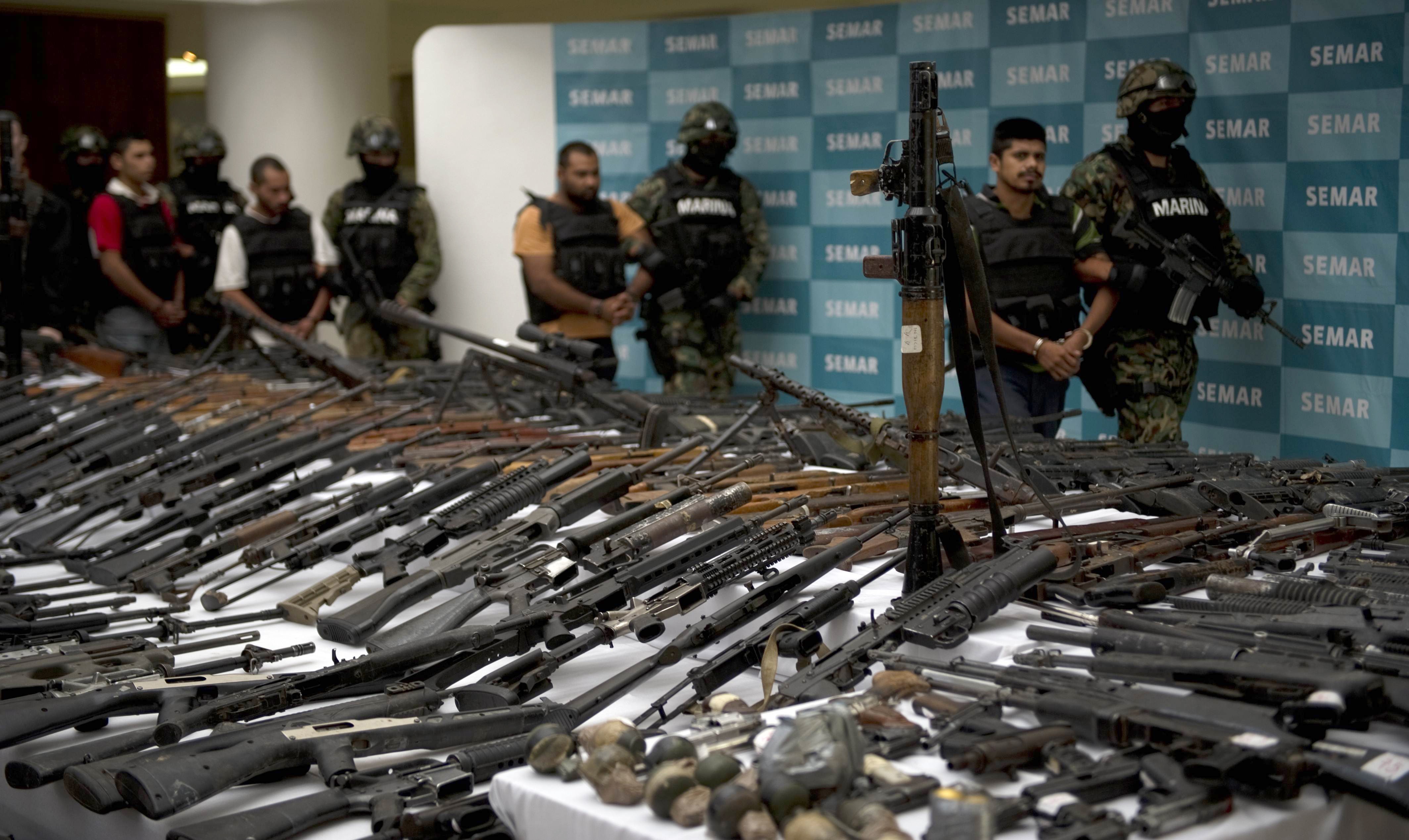Ever wondered who would win in a showdown between the Italian Mafia and a Colombian Cartel? These two titans of the underworld, while sharing a common thread of organized crime, possess distinct histories, structures, and agendas. They operate in distinct geographical areas with different specialties. Although they might team up occasionally, their rivalry stems from their competitive nature and struggle for dominance in the global criminal market.

Image: www.foxnews.com
This article delves into the complex world of the Mafia and cartels, dissecting their origins, tactics, and the enduring battle for supremacy. We’ll explore their contrasting structures, analyze their impact on societies worldwide, and examine the dynamics that fuel their rivalry.
Origins and Evolution
The Mafia: A Tale of Sicilian Roots
The Mafia’s roots can be traced back to 19th-century Sicily, where a culture of honor, loyalty, and retribution thrived. The term “Mafia” itself is believed to derive from the Arabic word “mafiya,” meaning “refuge” or “protection.” It evolved as a network of powerful families, each maintaining control over specific territories and engaging in various criminal activities, from extortion and loan sharking to gambling and drug trafficking.
The Mafia’s influence spread outward, reaching the United States in the early 20th century with a wave of Italian immigrants. The American Mafia established itself as a powerful force, controlling numerous rackets and wielding considerable political and economic influence. Think Al Capone, the infamous Chicago mobster, who dominated the city’s illegal liquor trade during the Prohibition era.
The Cartels: A Modern Phenomenon
Cartels, on the other hand, emerged as a modern phenomenon, fueled by the massive profits of the drug trade in Latin America. Originating predominantly in Colombia, Mexico, and Brazil, these organizations evolved as powerful criminal networks, often with intricate structures, sophisticated logistical networks, and a ruthless approach to eliminating competition.
The rise of cocaine production in Colombia, coupled with the immense global demand, provided the fertile ground for the development of cartels. They operated with a degree of ruthlessness unknown even to the Mafia, resorting to violence, intimidation, and corruption to maintain control over their vast empires.

Image: www.livescience.com
Mafia vs. Cartel: A Clash of Styles
Mafia: Tight-Knit Family Structures
The Mafia operates with a highly hierarchical structure, often reminiscent of a traditional family. “Families” are led by a “Don,” who holds absolute authority and commands respect from his underlings. The structure is characterized by rigid obedience, loyalty, and strict codes of conduct that govern every aspect of their operations.
These codes, often known as the “Omertà,” place a heavy emphasis on secrecy, loyalty, and non-cooperation with authorities. It’s a code that has enabled the Mafia to thrive for generations, surviving numerous crackdowns and arrests.
Cartels: Fluid Networks with a Focus on Profits
Cartels operate with a more fluid structure, resembling corporations with different departments responsible for various aspects of their criminal enterprises. Unlike the Mafia’s emphasis on tradition and family ties, cartels prioritize profit and pragmatism. They are constantly evolving, adapting to changing market dynamics and exploiting opportunities to maximize their gains. This agility allows cartels to maintain dominance even when faced with law enforcement pressure.
Cartels are known for their brutality, often employing violence as a primary tool for control and intimidation. They are also masters of corruption, bribing officials and infiltrating government institutions to secure their operations and hinder any attempts to dismantle their networks.
The Power Dynamics and Rivalry
Despite their contrasting approaches, the Mafia and cartels have a shared interest in maximizing profits through various illegal ventures. This leads to competition and sporadic collaboration. In certain instances, the Mafia and cartels have forged alliances, pooling resources for logistics, distribution, and money laundering. For instance, the Sicilian Mafia’s extensive network in Italy has proven invaluable to Colombian cartels in smuggling cocaine into Europe.
Nevertheless, their rivalry is evident in their constant battle for control and influence in global criminal markets. Cartels, with their sheer scale of operations and ruthless tactics, have gained an edge in the lucrative drug trade. But the Mafia, with its history, influence, and established networks, remains a formidable adversary. This rivalry is a dynamic one, with both sides adapting and seeking to outwit and outmaneuver the other.
Impact and Legacy
The impact of both the Mafia and cartels on societies around the world has been profound and devastating. Their criminal activities have left trails of violence, corruption, and fear. The Mafia has infiltrated various sectors, from construction and waste management to financial institutions, undermining the rule of law and creating a climate of distrust.
Cartels have brought untold misery to Latin America, fueling a cycle of violence, bloodshed, and drug addiction. They have destabilized governments, corrupted law enforcement, and shattered communities. Their greed has fueled a global drug epidemic, impacting countless lives and shattering families around the world.
The Enduring Struggle: A Never-ending Battle
The battle between the Mafia and cartels remains a constant struggle for power and dominance over the criminal underworld. Law enforcement agencies worldwide are engaged in a perpetual game of cat and mouse, trying to dismantle their networks and bring them to justice. However, the complexities of these organizations and their resilience make it a challenging task.
The fight against organized crime is a global undertaking that requires international cooperation, intelligence sharing, and a comprehensive approach. It necessitates addressing the social and economic factors that breed crime, providing alternative opportunities for vulnerable populations, and tackling corruption within governing institutions.
Mafia Vs Cartel
https://youtube.com/watch?v=n7BKldTBcyU
Conclusion
The Mafia and cartels represent two distinct, yet interconnected facets of the global criminal underworld. Their histories, structures, and operations are fascinating, but their impact on humanity is disturbing. This article has provided a glimpse into their complex world, highlighting the intricacies of their rivalry and the ongoing fight for dominance. It is a tale that continues to unfold, with the stakes escalating as new challenges and opportunities arise in the ever-evolving landscape of organized crime.






